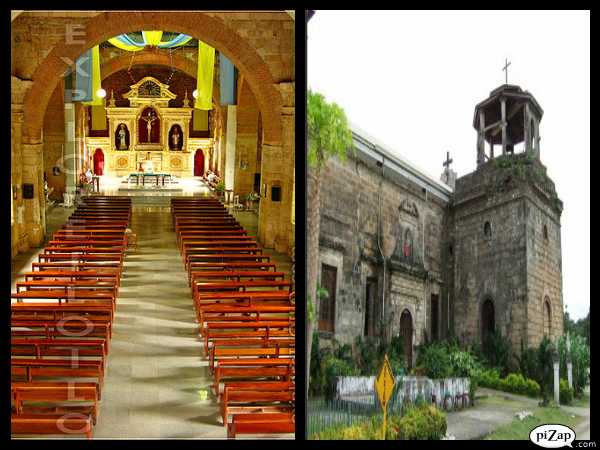In the present, a huge concrete figure of Our Lady of Lourdes stands on the convent ruins, a triple arched concrete canopy broken with a bass relief of an Augustinian Emblem stood life-size images of St. Peter, St. Joseph and at the center, St. Thomas of Villanova. The walls and buttresses of this house of God reveal a robust baroque architecture.
Tuesday, February 28, 2012
Parish of St. Thomas Of Villanova(Alimodian,Iloilo)
Alimodian became an independent parish from Oton in October of 1574. A
few months later, a house of worship made of cogon, bamboos and logs was
established. In 1784, a new church made of briks and rocks plastered
with lime was built under the leadership of Fr. Francisco Monasterio and
was partially damaged by the earthquake in 1787.a gold necklace and documents were burried on the church’s proposed main
entrance. The visitors then were brought in the home of Capitan Timoteo
Amarra. On December of 1864, five years later, the church was formally
opened. In a tri-square form, a convent same size as the church occupy
the north to south and winding westward was started immediately and
completed in 1868.The roof made of bricks and limes were changed into galvanized iron in
February 13, 1882. Five years later, on the same day in 1887, an
earthquake rocked the building that caused the statue of San Agustin to
fall from its niche over the main entrance of the church.Post-war damage claims brought new improvement to the church in 1946.
Pews were donated and two side altars were roofed with nipa. But on the
dawn of January 28, 1948, the infamous earthquake “Lady Kaykay” shook
the whole island of Panay causing the major portion of the church,
convent and two-thirds of the belfry to topple down, bringing all the
bells except the largest one to the ground.
In the present, a huge concrete figure of Our Lady of Lourdes stands on the convent ruins, a triple arched concrete canopy broken with a bass relief of an Augustinian Emblem stood life-size images of St. Peter, St. Joseph and at the center, St. Thomas of Villanova. The walls and buttresses of this house of God reveal a robust baroque architecture.
In the present, a huge concrete figure of Our Lady of Lourdes stands on the convent ruins, a triple arched concrete canopy broken with a bass relief of an Augustinian Emblem stood life-size images of St. Peter, St. Joseph and at the center, St. Thomas of Villanova. The walls and buttresses of this house of God reveal a robust baroque architecture.
Subscribe to:
Post Comments (Atom)



No comments:
Post a Comment